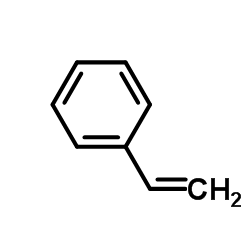Recently, my mom ordered a ceramic lamp from some online website. It arrived a few days later in a cardboard box that looked like it was big enough it could fit a child. The lamp itself was not even very large! However, the massive box it came in was filled to the rim with hundreds of packing peanuts; those messy, lightweight foam “nuggets” made out of expanded polystyrene (ESP). I understand that the lamp is fragile and that it needed to be protected during its shipment process. That being said, the use of such a harmful material seems unnecessary and even lazy.
Expanded polystyrene is more commonly referred to as Styrofoam–just as how people refer to a tissue as a Kleenex. Simply put, polystyrene is a type of plastic that is used for an array of different manufactured goods from meat packaging to children’s toys. Polystyrene comes from the organic compound Styrene.
According to the United States Environmental Protection Agency (EPA), Styrene is a Hazardous material. Styrene has many harmful and potentially cancerous effects, both short-term and long-term, on humans and animals. Short term, styrene can cause irritation of the skin and eyes. But its styrene’s affect on our body’s Central Nervous System that is truly threatening; potentially causing lasting affects such as respiratory issues, frequent headaches and loss of balance, and even hearing loss. Styrene has also been shown to have a negative impact on mental health, having shown correlations with depression (though correlation does not necessarily mean causation).
As most people know, Styrofoam is harmful to the environment because of its inability to decompose back into Earth’s soil. In every stage, Styrofoam achieves no positive contributions for the environment. Instead, it continues to add to the mountains of garbage that sits in country’s Landfills. To make matters worse, Styrofoam cannot be recycled. Expanded polystyrene is plastic unlike that used to make water bottles or plastic bags. Think about it, walking around areas, you will never commonly see a recycling bin that says ‘Place Styrofoam here’.
So why do we keep using it? Styrofoam is time and time again chosen over eco-friendly materials such as recycled cardboard or even plastic due to its cheap appeal. When purchased in bulk, Styrofoam can save up to 5 times the amount of money it costs to purchase paper based or other recyclable materials. To put that added cost into perspective, I will use a common and quite relevant example of how Styrofoam is frequently favored everyday because it is the cheaper option; school lunches. All over the country, students buy their hot lunch at school, which is served to them on a Styrofoam lunch tray. According to an article, in Portland, Oregon, it costs the Montgomery School District a measly 3 cents per Styrofoam tray, whereas their other options of trays would cost 7 cents per day. Now, four cents doesn’t seem like much but…Lets one high school serves lunch to 300 students each day, a school year being roughly 180 days. So each day by the end of one school year, it would cost the high school approximately $1620 to use Styrofoam trays, whereas a more eco-friendly option would cost the high school $3,780.
their hot lunch at school, which is served to them on a Styrofoam lunch tray. According to an article, in Portland, Oregon, it costs the Montgomery School District a measly 3 cents per Styrofoam tray, whereas their other options of trays would cost 7 cents per day. Now, four cents doesn’t seem like much but…Lets one high school serves lunch to 300 students each day, a school year being roughly 180 days. So each day by the end of one school year, it would cost the high school approximately $1620 to use Styrofoam trays, whereas a more eco-friendly option would cost the high school $3,780.
Links to Images:
http://www.chemspider.com/Chemical-Structure.7220.html
http://www.epodunk.com/cgi-bin/genInfo.php?locIndex=15425
